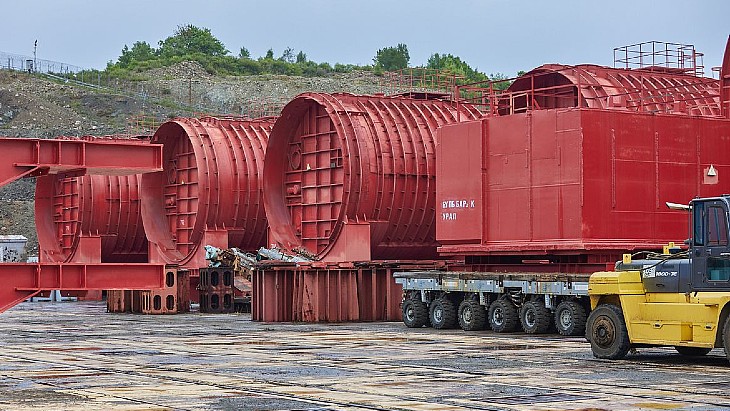Bulgarian waste treatment facility testing completed
 A demonstration test run of the Plasma Melting Facility at the Kozloduy nuclear power plant in Bulgaria has been completed. The facility will be used to treat low- and intermediate-level solid radioactive waste, reducing its volume and immobilising it.
A demonstration test run of the Plasma Melting Facility at the Kozloduy nuclear power plant in Bulgaria has been completed. The facility will be used to treat low- and intermediate-level solid radioactive waste, reducing its volume and immobilising it.A demonstration test run of the Plasma Melting Facility at the Kozloduy nuclear power plant in Bulgaria has been completed. The facility will be used to treat low- and intermediate-level solid radioactive waste, reducing its volume and immobilising it.
The Plasma Melting Facility was supplied by a joint venture between Spain's Iberdrola Engineering & Construction and Belgian radioactive waste management company Belgoprocess under a EUR29.9 million ($35.4 million) contract awarded in 2009. On-site construction of the facility began in mid-2015.
.jpg) |
| The plasma torch and off-gas system of the Kozloduy facility (Image: Belgoprocess) |
Belgoprocess was responsible for providing the process and for nuclearisation of the facility, as well as for the review of the engineering documents, development of the environmental impact assessment, commissioning and start-up of the facility and training of future operations staff. Iberdrola provided detailed engineering, procurement of the main components and licensing of the process. The project was co-financed by the European Bank for Reconstruction and Development (70%) and the Bulgarian government (30%).
In the facility, plasma is used as a heat source to melt inorganic waste and gasify organic waste, resulting in a slag as a robust end product. Treatment of the resulting flue gases is similar to the treatment used in conventional radioactive waste incinerators, such as the one installed at the Belgoprocess site in Dessel, Belgium.
As part of the facility's commissioning, the installation has now undergone a 72-hour continuous test run using simulated radioactive waste. These tests successfully demonstrated that the facility complies with the designed capacity and required volume reduction factor. Different pours of hot liquid slag at a temperature of about 1300°C as well as safety tests were also carried out.
The Kozloduy site is home to two operating Russian-designed VVER-1000 pressurised water reactors, Kozloduy 5 and 6, as well as four shut-down VVER-440s. The plasma melting facility - with a capacity of 250 tonnes per year - will treat and condition waste generated during the operation of the six units, wastes generated from the dismantling of units 1 to 4 and wastes generated during the ongoing operation and eventual decommissioning of units 5 and 6.
The facility will be able to treat radioactive wastes of various types, including: organic waste in bags; mixtures of organic and inorganic wastes in 200-litre steel drums; supercompacted wastes (organic, wood and concrete); and, liquid wastes, such as oil.
The treatment of such wastes will help reduce the volume of low- and intermediate-level (LLW/ILW) waste stored at the Kozloduy site. It will also help ensure there is sufficient capacity at existing on-site waste storage facilities until a national LLW/ILW storage facility opens. Construction of the repository began in August this year, with commissioning scheduled for 2021.
The Plasma Melting Facility will be operated by the State Enterprise Radioactive Waste (SERAW), which is responsible for the decommissioning of Kozloduy 1-4 and the national radioactive waste disposal facility.
Researched and written
by World Nuclear News
_17992.jpg)
_75800.jpg)







_66488.jpg)


